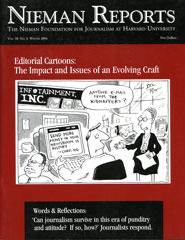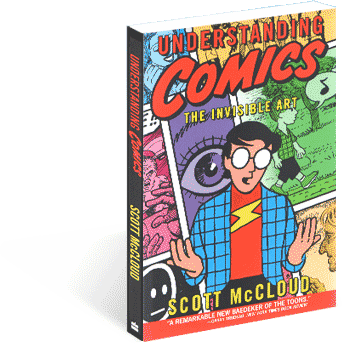(This post by Professor Downey has been moved to a more appropriate site — his personal weblog, The Note on my Door.)
Author Archives: wpadmin
Demanding a Revolution?
Below is my latest post on MediaTrope:
Have you seen the latest report from National Council for Journalists?
Their major finding: Editors still prize traditional skills. One editor in the report said:
An ability to spot a story, conduct a strong interview and then produce clean, legally sound, well-structured copy remains the priority,” said one editor, “with these key skills everything else (social media, video etc) will follow.
Another finding in the report suggests that understanding audience interaction and digital skills were low-totem-poll priorities. The report concluded: “What is required is for the exam to evolve; there is no demand for a revolution.”
I do a ton of interviews with journalists and always end with the question, “what should I be teaching our students, your future employees?” And the answer has always been the same: Good reporting, writing skills. Always good to be reminded. This is a no-brainer.
And yet some of the dialogue in this report distresses me, particularly the de-emphasis on digital skills such as interactivity. My interviews with audience members suggest they want immediate information they can connect with and do something with.
It occurs to me that the industry is not doing so hot right now. Perhaps we need to rethink skill priority in the effort of experimenting with new content and revenue platforms. I’m not saying do away with good reporting and good writing skills — these are what help set journalists apart from all the other noise. However, my interviews with audience members indicate that if journalists want to remain relevant to their lives, reporters need to re-learn how best to apply those reporting and writing skills in new kinds of formats and presentation styles with linking pathways and connection opportunities.
Revolution may be in order.
The internship debate
I am curious what our students make of the arguments in this piece:
Unpaid Interns, Complicit Colleges – NYTimes.com
_______
Snip:
The uncritical internship fever on college campuses — not to mention the exploitation of graduate student instructors, adjunct faculty members and support staff — is symptomatic of a broader malaise. Far from being the liberal, pro-labor bastions of popular image, universities are often blind to the realities of work in contemporary America.
_______
Here in the SJMC, we’ve worked with employers many times, trying to fashion internships with compensation or where it was not possible, a robust experience that paid off later. Our alumni have helped with this effort, as well, through such things as funding the Sharon Stark Investigative Internship at the Milwaukee Journal Sentinel.
But I’d like to hear from students. What do you make of the arguments? What have been the strengths and weaknesses of your paid and unpaid internships?
Take a look at Antenna
Well, it only took me two years to figure out that our colleagues upstairs in the Department of Communication Arts have a great collaborative weblog going too! It’s called Antenna and it is well worth a read. In their own words:
Antenna is a collectively authored media and cultural studies blog committed to timely yet careful analysis of texts, news, and events from across the popular culture spectrum. The site regularly responds to new works and developments in television, film, music, gaming, digital video, the Internet, print, and the media industries.
Antenna is intended to address a broad public inside and outside the university walls. Within those walls, though, it further intends to bridge the gap between scholarly journals, which remain the paradigm for scholarly discourse but too often lack the ability to reply to issues and events in media with any immediacy, and single-author media scholar blogs, which support swift commentary but are limited in their reliance upon the effort and perspectives of individuals. Coordinated by a group of writers who draw on a variety of approaches and methodologies, Antenna, therefore, exists as a means to analyze media news and texts, both as they happen and from multiple perspectives.
Antenna is operated and edited by graduate students and faculty in the Media and Cultural Studies area of the Department of Communication Arts at the University of Wisconsin – Madison. However, content is provided from a mixture of our editors and of a diverse group of writers elsewhere.
Maybe Mediated Communication readers might even engage in some cross-blog discussion?
What explains the power of editorial cartoons?
SJMC instructor Jim Danky recently asked an intriguing question on our internal email list, and I thought it would be a good topic to open up on the weblog (with his permission):
Yesterday I received a question from Victor Navasky that I could not answer beyond some anecdotes so I am asking for assistance. (And yes, the answer is of interest to me as well).
Why do cartoons often have a greater impact than words? Sometimes more than photographs? Given that we live in the age of mechanical reproduction, why is it that something from the head and hand remains in our memory longer than words on occasion?
Historians and quantifiers, all ideas and citations warmly received.
 My own response was to point to this special issue of Nieman Reports from 2004, on “Editorial cartoons: The impact and issues of an evolving craft.” For example, communication professor Chris Lamb wrote:
My own response was to point to this special issue of Nieman Reports from 2004, on “Editorial cartoons: The impact and issues of an evolving craft.” For example, communication professor Chris Lamb wrote:
When editorial cartoons are at their best, they’re like switchblades—simple and to the point. They cut deeply and leave a scar. No editorial on President Lyndon B. Johnson’s administration is as memorable as David Levine’s drawing of LBJ lifting up his shirt to reveal his gall bladder scar in the shape of Vietnam. Herbert Block, or Herblock as he signed his cartoons, captured the anti- Communist hysteria of the Red Scare by creating the word “McCarthyism.” Later, Herblock’s portrayal of Richard Nixon climbing out of a sewer made such an impression on Nixon that he later told an adviser, “I have to erase the Herblock image.” Robert Minor’s searing World War I cartoon of a medical examiner salivating over a giant headless soldier and gushing, “At last a perfect soldier!” is a timeless indictment of war. And Thomas Nast’s drawing of “Boss” Tweed as a bag of money remains an enduring symbol of political corruption.
But as editorial cartoonist Bruce Plant pointed out,
It’s not a pretty picture. The number of editorial cartoonist staff positions has dwindled from a high of almost 200 in the mid-1980’s to about 85 now.
 My own view on the power of cartooning has been shaped by Scott McCloud’s wonderful volumes on Understanding Comics (1993), Reinventing Comics (2000), and Making Comics (2006), where he explores how “The heart of comics lies in the space between the panels where the reader’s imagination makes still pictures come alive,” substituting the flow of space for the passage of time. This is a unique and imaginative medium, he argues:
My own view on the power of cartooning has been shaped by Scott McCloud’s wonderful volumes on Understanding Comics (1993), Reinventing Comics (2000), and Making Comics (2006), where he explores how “The heart of comics lies in the space between the panels where the reader’s imagination makes still pictures come alive,” substituting the flow of space for the passage of time. This is a unique and imaginative medium, he argues:
Comics’ place in society is vital […] as one of the few forms of personal communication in a world of committee-built automatons and corporate mass-marketing. Comics offers a medium of enormous breadth and control for the author, a unique, intimate relationship with its audience, and a potential so great, so inspiring, yet so brutally squandered, it could bring a tear to the eye. [McCloud S 2000, p. 3]
What do Mediated Communication readers think? Do cartoons and comics matter in journalism and mass communication? In politics and the public sphere? If so, then why?
